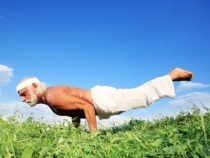 If you are in the age range of 40-65, you’re a “Boomer”, like many of my patients, born right after WWII. As a Boomer, you’re healthier, more active and younger than previous generations your same age. It was your generation that ushered in the “fitness” movement back in the 70’s and who is responsible for the Wellness and Fitness industry still going strong today.
If you are in the age range of 40-65, you’re a “Boomer”, like many of my patients, born right after WWII. As a Boomer, you’re healthier, more active and younger than previous generations your same age. It was your generation that ushered in the “fitness” movement back in the 70’s and who is responsible for the Wellness and Fitness industry still going strong today.
Yet, with all the emphasis on wellness and fitness, more and more Boomers are getting what many orthopedic doctors refer to as ‘boomeritis’. No, boomeritis is not a serious disease. But it can be a serious pain/injury in the bones and joints of your neck, hip, legs and feet. It accounts for about a third of the 17 million sports-related injuries in the United States today. In case you’ve never heard of it, let me tell you more about this syndrome that especially afflicts Boomers like yourself.
Boomeritis – What Is It?
Though there is a popular book of the same name, the term ‘boomeritis’, as refers to orthopedic injuries in Boomers, was created by an orthopedic surgeon, Dr. Nicholas A. DiNubilie, at the University of Pennsylvania Hospital in 1999. It refers to a particular set of symptoms seen most often in amateur athletes – especially the ‘weekend warriors’ – of the Boomer age group. These are the weekend runners, sport players, bicyclists, etc who go at it a little too hard on the weekends and end up with the following symptoms:
- Broken bones
- Ankle and wrist sprains
- Stiffness and soreness of joints
- Inflammation of tendons, ligaments, muscles and skin
- Chronic pain
- Swelling
- Overstretched/torn ligaments/tendons/muscles
What Causes Boomeritis?
As boomeritis comes about from a lot of exercise activity on weekends primarily, it might seem that doing less exercise would help the condition. The truth is, boomeritis actually develops from not enough exercise. A few factors are involved:
- Lack of regular, consistent exercise
- Lack of warming up muscles
- Overusing the same muscles and not using other supporting muscles enough
Hitting exercise and sports hard on weekends, and being somewhat inactive the rest of the week, is a sure-fire way to start causing many of those boomeritis symptoms listed above.
How to Prevent Boomeritis
The best way to stay physically active and fit as you age is to forget the weekend warrior idea. In order to keep your bones strong, joints, ligaments, tendons and muscles flexible well into your 90’s and above, you need to do regular exercise several times a week. Rather than doing the same activity using the same muscles over and over, try changing up your routine. Here’s what helps prevent the condition of boomeritis from developing:
- Stretching exercises daily. Whole body stretching for 10-15 minutes a day in the morning, and once at night, is important to prevent strains/tears of muscles or overstretching of tendons and ligaments. It helps strengthen bone and releases stress and tension in muscles. Yoga is very good for stretching all the muscles of the body, as well as providing some aerobic benefit. Find a good stretching program on DVD to learn, or ask a trainer at your gym to show you a good whole body stretching routine.
- Aerobic intervals/cross training. Using jogging, rebounding, swimming, cycling, rowing, etc, aerobic intervals help strengthen your heart as well as burn fat. Warm up for 10 minutes at a lower speed/intensity. Then, ramp up the intensity/speed for sets of 1-2 minutes, for a total of about 10-12 minutes. Aerobic intervals should be done 3-4 times a week. Don’t use the same activity for your intervals though to prevent over-strengthening one set of muscles and weakening others. Be sure to do intervals after stretching.
- Intermediate exercise. More leisurely paced exercise can be done on the days that you don’t do aerobic intervals, or even combined with them. These include bicycling, and walking, playing sports games (tennis, racquetball, basketball), etc. At least 30 minutes, after stretching adequately. Be sure to use proper equipment and shoes.
- Weight training. This helps bones and muscles stay strong and fights fat gain. Get the proper instruction initially to ensure proper lifting techniques. Avoid over-training.
The key to avoid becoming a sidelined Boomer, and staying active and healthy into your golden years, is to do regular exercise. Engage in the physical activities you enjoy regularly but also challenge your body (and your brain!) by learning new activities, like hip-hop, or Zumba, dancing, rebounding or tai chi. Varied exercise and activities help ensure whole body exercise.
Stay Well,
Mark Bromson, M.D.
Natural Health News
Boomeritis, http://www.medterms.com/script/main/art.asp?articlekey=23412
Men’s Health, http://men.webmd.com/features/bad-case-of-boomeritis?page=2
photo credit: fenyportal.hu
